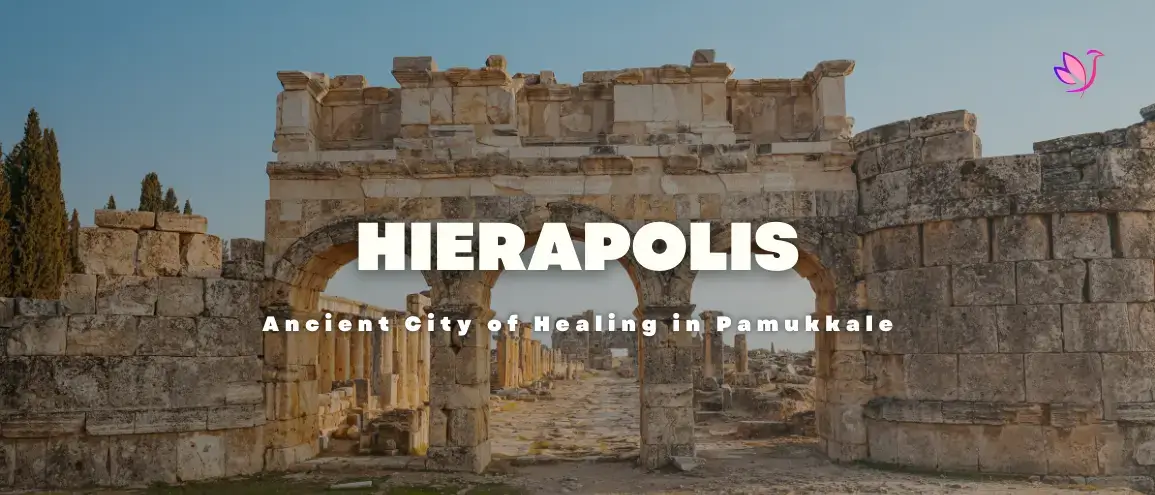Hierapolis

Explore Hierapolis: Ancient City of Healing and History in Pamukkale, Turkey
Nestled in the stunning landscape of Pamukkale, Turkey, Hierapolis is an ancient city that offers a fascinating blend of history, culture, and natural beauty. Known for its well-preserved ruins, thermal springs, and connection to the Roman Empire, Hierapolis is a UNESCO World Heritage Site and a must-visit destination for travelers exploring Turkey's rich heritage. Whether you're a history enthusiast, an archaeology buff, or simply seeking a unique experience, Hierapolis promises to captivate your imagination.
A Glimpse into the History of Hierapolis
Hierapolis was founded in the 2nd century BCE by the Pergamene Kingdom and later became a prominent Roman city. Its name, meaning "Holy City," reflects its reputation as a center of healing and spirituality, thanks to its thermal springs and sacred sites. The city flourished during the Roman and Byzantine periods, becoming a popular destination for those seeking the therapeutic benefits of its hot springs.
Hierapolis is also significant for its connection to early Christianity. According to tradition, the city was the site of the martyrdom of Saint Philip the Apostle, and it became an important religious center during the Byzantine era.
Today, Hierapolis is renowned for its well-preserved ruins, which include a grand theater, ancient baths, and a necropolis, making it one of Turkey's most impressive archaeological sites.
Top Attractions in Hierapolis
-
The Theater
The Roman theater of Hierapolis is one of the best-preserved ancient theaters in Turkey. Built in the 2nd century CE, it could seat up to 15,000 spectators and hosted performances, gladiatorial contests, and public gatherings. The theater's intricate carvings and stunning acoustics are a testament to Roman engineering and artistry. -
The Sacred Pool (Antique Pool)
The Sacred Pool, also known as Cleopatra's Pool, is one of Hierapolis's most famous attractions. Filled with warm, mineral-rich water from the thermal springs, the pool is surrounded by ancient columns and ruins, creating a unique and relaxing experience. Visitors can swim in the pool and enjoy its therapeutic properties. -
The Necropolis
Hierapolis is home to one of the largest and most well-preserved ancient cemeteries in Turkey. The necropolis contains over 1,200 tombs, ranging from simple graves to elaborate monuments, reflecting the city's diverse cultural influences. -
The Plutonium
The Plutonium, or the Gate of Hell, was a sacred site dedicated to Pluto, the god of the underworld. The site emits toxic gases, which were believed to have mystical properties. Ancient priests performed rituals here, demonstrating their immunity to the gases. -
The Frontinus Street and Gates
The main street of Hierapolis, Frontinus Street, is lined with columns and leads to the city's monumental gates. These gates, including the Domitian Gate and the Byzantine Gate, are impressive examples of Roman and Byzantine architecture. -
The Martyrium of Saint Philip
This octagonal structure is believed to be the site of Saint Philip's martyrdom. The Martyrium is an important pilgrimage site and a remarkable example of early Christian architecture. -
The Pamukkale Travertines
While not part of Hierapolis itself, the nearby Pamukkale Travertines are a natural wonder that complements the ancient city. These white terraces, formed by mineral-rich thermal waters, are a UNESCO World Heritage Site and a must-see attraction.
Tips for Visiting Hierapolis
-
Wear Comfortable Shoes: The site involves walking on uneven terrain, so sturdy footwear is essential.
-
Bring Swimwear: Don't miss the chance to swim in the Sacred Pool, but remember to bring your swimwear and a towel.
-
Visit Early or Late: To avoid crowds and the midday heat, plan your visit for early morning or late afternoon.
-
Combine with Pamukkale: Hierapolis and Pamukkale are located in the same area, so plan to explore both sites in one trip.
Conclusion
Hierapolis is a treasure trove of history, culture, and natural beauty, offering visitors a unique opportunity to step back in time and explore the legacy of the ancient world. From its grand theater and sacred pool to its necropolis and thermal springs, Hierapolis is a destination that promises to leave a lasting impression. Plan your visit to Pamukkale today and discover the timeless allure of Hierapolis!